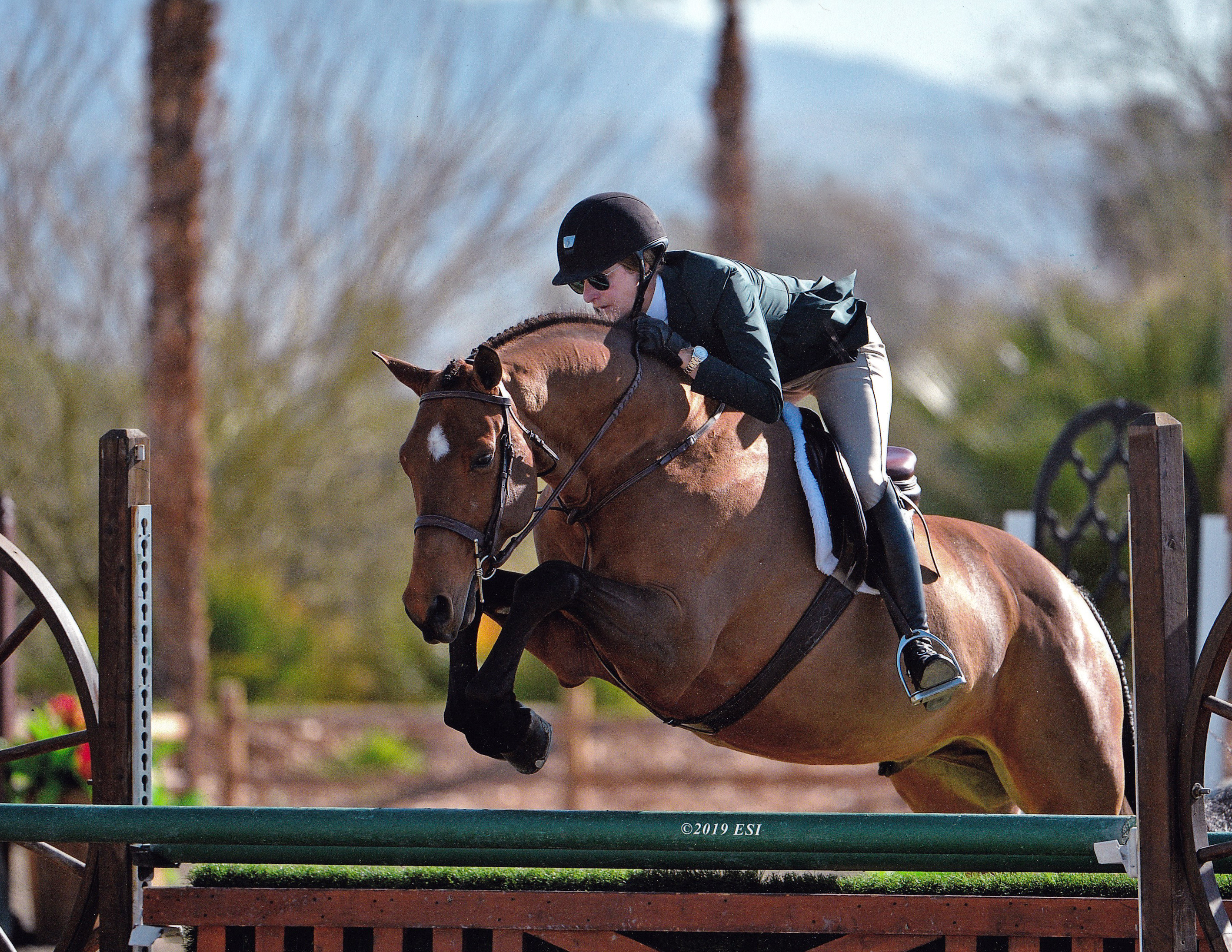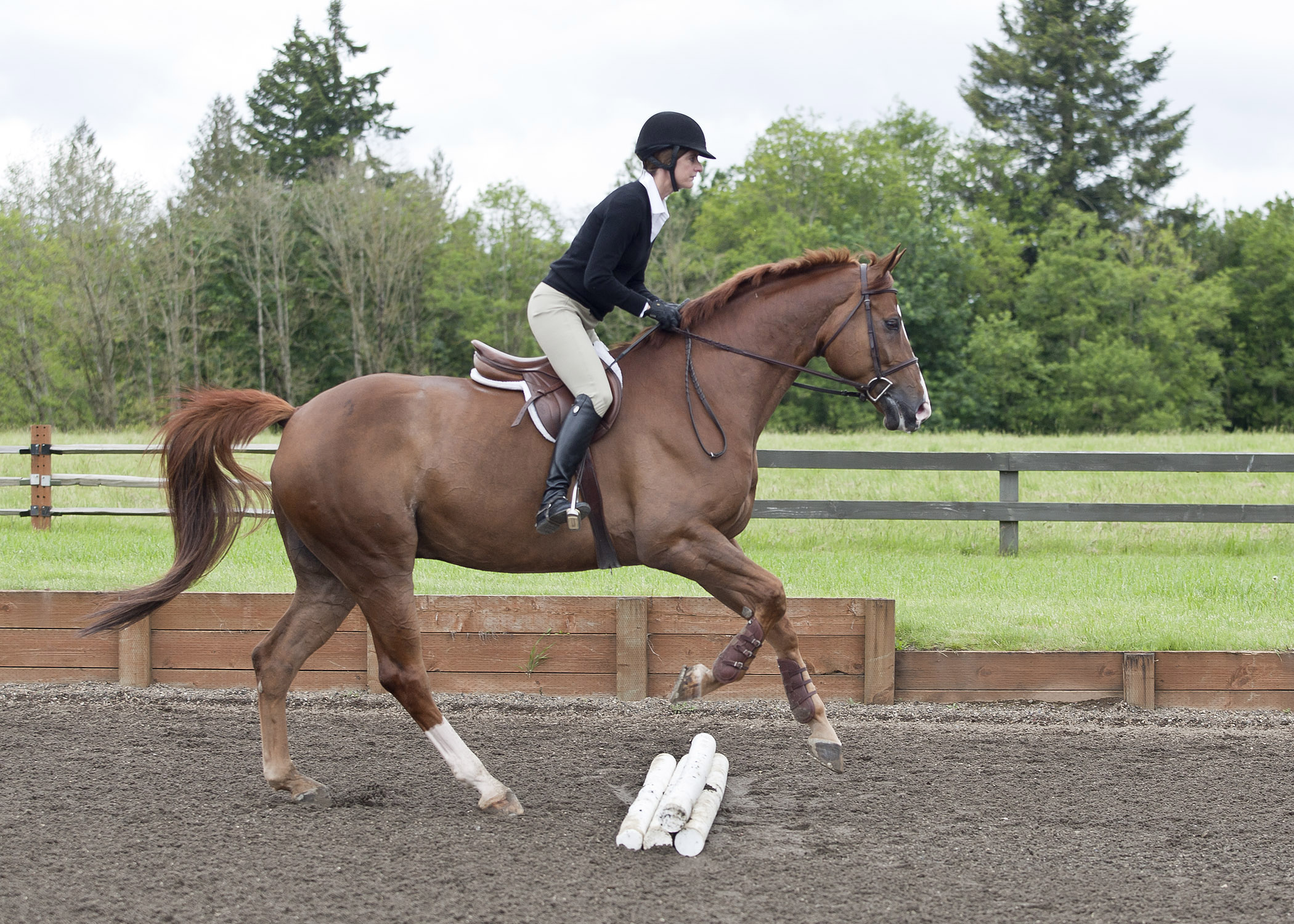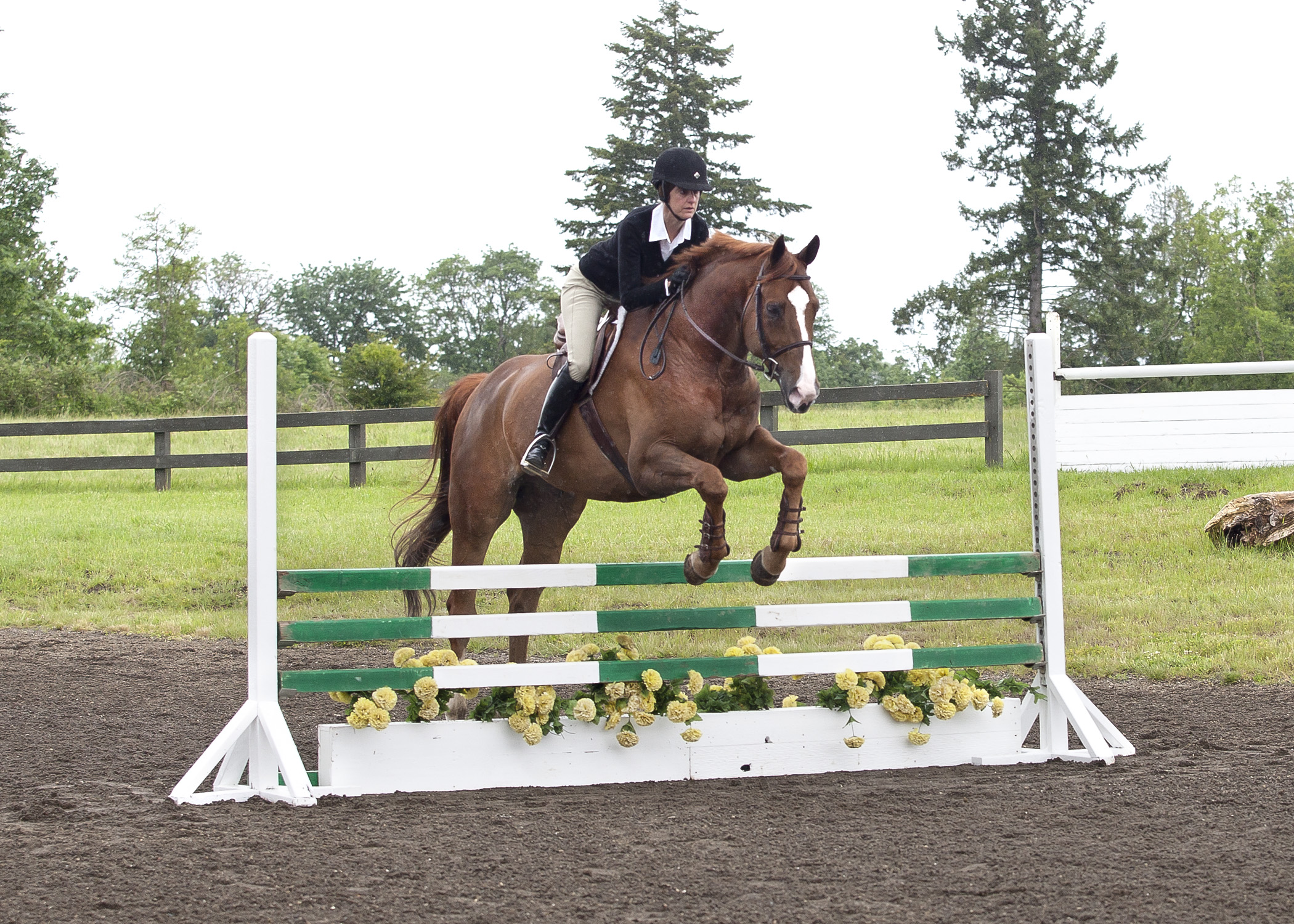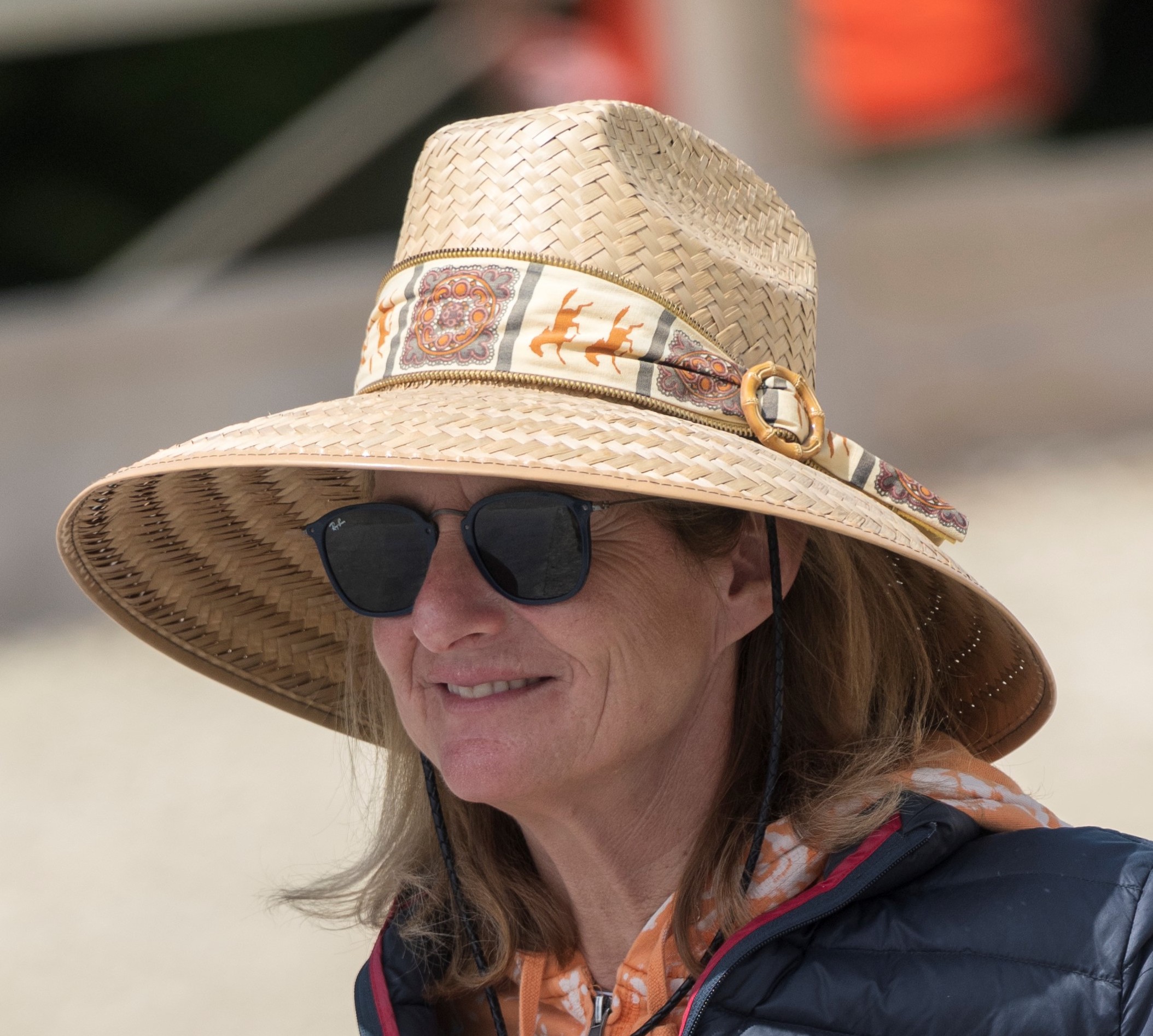
In this week’s Practical Horseman podcast, Oregon-based hunter/equitation trainer and rider Shelley Campf shares her strategy for “seeing a distance,” where the rider concentrates on the correct track to the fence and the horse’s rhythm and pace around the corner and in the approach to the fence. Then a few strides in front of the fence, the rider gets into her jumping position and focuses on maintaining that. What the rider does not do is actively look for a distance.
Shelley wrote a training article for Practical Horseman magazine several years ago, “Get ‘In the Zone’ for Better Jumping.” In the article, she describes her training philosophy and program, which teaches riders to allow their horses to jump rather than making their horses jump. In this approach, the last few strides before the fence, the horse can focus on doing his job—jumping his best—not wondering what his rider is doing.

For full disclosure, Shelley was my trainer on the East Coast 30 years ago when I rode as an amateur. I consider her to be one of my most influential riding instructors. When Shelley started teaching at the stable where I rode, I was at a pretty low point. I felt like I was not a very good rider largely because I was convinced that couldn’t see a distance to a fence. I thought that most everyone else could—that they were just naturally better riders than me. This included my brother, David Oliynyk, who at the time, had recently won one of the big equitation finals, what is now called the U.S. Equestrian Federation Show Jumping Talent Search Finals—East.
As a result of all of this, I worked really hard to see my distances—and that ended up not going so well. I put a lot of pressure on myself because I felt like all of the responsibility of jumping a course was on me—and I was failing. When Shelley started to work with me, she helped me realize that, in fact, the opposite was true—that I actually had to do less and be more of a passenger to allow my horse to jump his best.
This transformation didn’t happen overnight. We started on the flat, where Shelley taught me to ride my horse more from my leg. Then we started jumping over poles on the ground and small crossrails, initially with me thinking about getting in my jumping position a few strides in front of the fence—what Shelley refers to as being “in the zone.”

One reason that I am excited to write about what I learned from Shelley is that it really revolutionized how I rode. After several months of practicing to ride under Shelley’s method, I began to win, which was great and a huge confidence boost, but even more importantly, at the time, riding became more fun.
In our conversation for the podcast, Shelley speaks about:
• Why horses jump. She says that the reason horses jump is because there is something stationary in front of them. The actual jumping mechanism is handled by the horse, not the rider. “We forget that a horse is not a car. It has a brain,” Shelley says. “A horse, when it looks at the jump, it is measuring the jump also. Some horses better than others and some horses are easier in their rhythm to find a jump. But if we go along and maintain consistency in pace, in balance, in the track—that means not going left or right in route to the jump—the horse actually measures the jump in conjunction with us. So I always say, ‘Let him help you find the jump.’ And the anxiety level of the rider goes down when they’re concentrating more on how their horse is reading the jump than they are on their lack thereof of being able to quote unquote see the distance.”
• How the art of being a good passenger will actually help build a partnership with your horse. “It’s so much easier to let the horses have their freedom and their liberty to be in partnership with you,” Shelley says. “It’s not a military dictatorship. It’s a partnership with you. And if they can have their partnership with you, the anxiety level of the rider goes down when they are thinking about how the horse is responding to the situation.”
• Why you want the horse to be focused the last few strides on jumping the fence and not on you. “If we have too much dialog with them right in front of the jump, they’re thinking about what we’re asking them rather than the jump.”
• How you achieve allowing your horse to focus on his job the last few strides before the jump. Shelley says that when she is competing at a national championship and starts to get nervous, she reminds herself to concentrate on things like, heels down, thumbs up, put your horse in front of the leg, think about your courtesy circle. “I’m concentrating on what to do and not what not to do,” she says. [When teaching], if I can distract [my students] from the performance anxiety of doing it wrong and can get them concentrating on what they should do, [a problem] usually resolves itself. This takes some time in lessons to get them overcome that fear of failure or fear of being embarrassed or fear of ‘missing a distance.’ Once they’re over that fear, a whole new world opens up.”
• Why there is no such thing as a perfect distance. “Look at Olympic team riders,” Shelley says. “They find an array of distances … and none of them would ever dream of saying they missed a distance.” These riders will make the canter match whatever question a part of the course is asking. If you have good canter and good balance and the distance is a little long, horses should stretch a little to get over the jump, not act like that’s a mistake. If the distance is quiet, horses should be comfortable rocking back and jump up and around the fence. This way, Shelley says, you have a 5- or 6-foot margin of error where “if the rider not interfering, the horse can figure it out.
“We have to get out of thinking exactly what we think is going to be a workable distance and remember that the horse is the one jumping. And we have to allow him to enjoy the array of workable distances,” she adds.
• An exercise to avoid doing too much in the zone of the jump. “Learning to abandon overriding in front of the jumps is really, really hard, so my advice is to make it as simple as possible,” Shelley says. She recommends setting up a figure-eight pattern of jumps, where the jumps are so small they are of no consequence—it can even be a pole on the ground or a pile of three poles. The rider stays focused on the track to the jump and maintaining a correct pace, and in the zone of the jump, she gets in the jumping position and focuses on her position only. “What [the horse] does is what he does.”

To fill you in on Shelley’s background, she was born and raised in Calgary, Alberta, and rode with her future husband Jeff Campf’s, mother, Claudia Cojocar. She graduated from the University of Calgary with a degree in applied mathematics and was going to be an engineer, but the connection with horses kept pulling her back to the hunter/jumper world. Eventually, she and Jeff settled in the Pacific Northwest and opened a training facility, Oz Incorporated, just outside Portland, where they both teach all levels of hunter, jumper and equitation riders. They also both ride and compete—Jeff in the jumpers and Shelley in the hunters. Shelley is also involved in various facets of the industry. She is a founding member of the U.S. Hunter/Jumper Association and has been the chair of the USHJA Trainer Certification Program for several years.
About the Practical Horseman Podcast
The Practical Horseman podcast, which runs every other Friday, features conversations with respected riders, industry leaders and horse-care experts to inform, educate and inspire. It is co-hosted by Practical Horseman editors Sandy Oliynyk, Emily Daily and Jocelyn Pierce. The next podcast will be with top hunter rider Liza Boyd, and future episodes feature Canadian Olympian Selena O’Hanlon, dressage Olympian Ali Brock and eventer Matt Brown.
Please rate, review and subscribe to the podcast. You can subscribe and listen to our podcast on Apple Podcasts or iTunes, Stitcher and Soundcloud.






